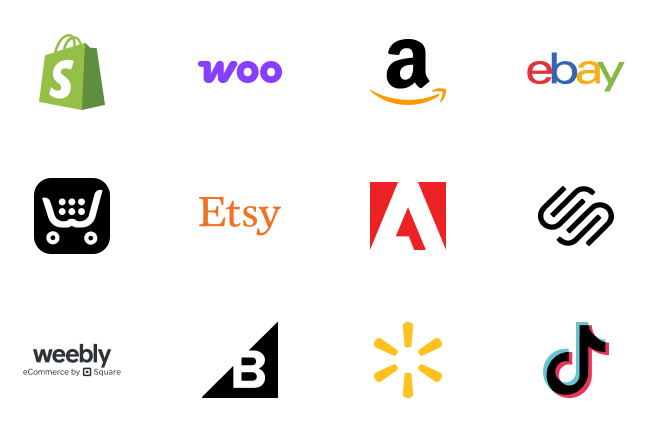The internet has made it easy for entrepreneurs to skip the hassle of trying to fund their ventures with traditional financing methods. Crowdfunding and Peer-to-peer lending are becoming increasingly attractive alternative methods of raising capital for startups. However, most people don’t realize that there are significant differences between the two fundraising methods.
Although both methods involve people coming together to provide financial backing, there are several major distinctions between these two types of fundraising. If you’re looking to raise capital for your own venture, it’s important to understand the difference between crowdfunding and p2p lending.
In either case, if your endeavors require shipping products to backers or customers, Easyship can help you figure out the right shipping and warehousing strategy for your business. But first, here’s what you need to know about the two fundraising methods.
What is Peer-to-Peer Lending?
To understand the difference between crowdfunding vs. P2P lending, you should first understand what peer-to-peer lending is. Since 2005, this type of fundraising has enabled individuals to obtain business capital directly from willing lenders without the need to involve financial institutions.
Unlike crowdfunding, P2P lending investing is more like a loan. Peer-to-peer lending sites match potential investors with businesses who have applied for a loan. This means that the investor will have their investment repaid over a specified time and earn interest on top of this.
How Peer-to-Peer Lending Works
As mentioned, P2P lending involves the use of platforms that connect entrepreneurs with potential investors. These peer-to-peer lending sites essentially match entrepreneurs looking for a business loan with investors who can provide the amount of cash they need.
Additionally, peer-to-peer lending sites charge interest rates based on past credit scores and financial history. Most of them also offer various types of financing, including mortgage loans, car loans, loans for short-term needs, invoice financing, personal loans, and pawn-broking.
Investors can select exactly what type of project or loan they want to finance based on the amount of money they want to contribute and their level of risk tolerance. These investors will earn money through the interest charged on these loans and don’t usually have to pay usage fees. However, borrowers are charged interest on their loans and will need to pay platform fees. Some of the common peer-to-peer lending sites include:
- Mintos
- Crowdestor
- Grupeer
- RateSetter
- LendingClub
- Prosper
What is Crowdfunding?
One of the reasons why most people can’t articulate the difference between crowdfunding and p2p lending is because the term “crowdfunding” is often used as a catch-all term for funding sourced from the public. Technically, crowdfunding involves raising capital from a large group of people an online platform; it’s become a popular method for many businesses, charities, and individuals to raise funds for new ideas, ventures, and projects.
Crowdfunding collects small amounts of money from multiple backers who are interested in supporting a particular project. The entity requiring financial support puts together a pitch on a crowdfunding platform to try and garner support from potential investors.
In return, the entrepreneur will offer a reward of some type rather than paying back the loan. This showcases the essential difference in crowdfunding vs. P2P lending.
Backer rewards in crowdfunding can vary greatly. They can take the form of gifts or products, a stake in the business (this is known as regulation crowdfunding), or exclusive offers and discounts. Popular crowdfunding sites include:
Types of Crowdfunding
There are five different types of crowdfunding, each with their own nuances. These are:
- Donation-based crowdfunding - As the name suggests, the person or business running the crowdfunding campaign is not expected to give anything in return; donors provide support simply because they like the entrepreneur’s idea. Donation-based crowdfunding is primarily used for social, community, medical, and charitable causes.
- Equity crowdfunding - This is also called regulation crowdfunding and involves entrepreneurs giving backers a stake in their company in return for capital. By supporting the company, the investor becomes a shareholder in the business. This is a popular method for startups and sole proprietorships to obtain funding.
- Debt-based crowdfunding - This type of crowdfunding is more or less similar to P2P lending. Here, the campaign owner borrows money from individuals to fund their business idea. They’re then required to repay the funds raised within a given period.
- Royalty-based crowdfunding - This model offers backers or investors a percentage of the revenue collected from the venture once it starts turning a profit. This doesn’t make the investors shareholders in the business - it simply entitles them to royalties accrued from the sales made.
- Rewards-based crowdfunding - This is a popular type of crowdfunding where backers are given rewards as a show of appreciation for investing in a campaign. The rewards can be physical - such as gifts - or intangible offers such as discounted prices for a product, but they’re usually directly proportional to the initial investment. Often, rewards are things like hats, product samples, shirts, or other souvenirs.
Comparing Crowdfunding vs. P2P Lending
As you can see, there are several important things to note in the difference between crowdfunding and peer-to-peer lending. While both have the same goal of raising capital for businesses, the processes and risks involved are not the same.
With crowdfunding, entrepreneurs can tap into a wider field of investors and raise unlimited amounts of capital. There’s also a higher chance of success with crowdfunding compared to P2P lending. However, this depends on the business and campaign themselves.
In equity crowdfunding, for example, the backer will lose all their investment if the business fails. On the other hand, there’s the prospect of substantial returns if the venture succeeds. In p2p lending, the main risk to the investor is if the borrower doesn’t repay the loan.
Fortunately, to protect investors from these risks, some peer-to-peer lending sites have advanced features such as provision funds, which allocate some contributions from borrowers as part of the loan and steps in if the borrower misses payments. Nevertheless, P2P lending is an investment and lenders can’t be assured of their money’s safety.
Comparing the two methods, crowdfunding - especially equity crowdfunding - arguably has higher risks. However, the rewards associated with it reflect this. This is why more sophisticated investors prefer using it. Peer-to-peer lending has more predictable returns with comparably low risk. To help you understand the two systems, we’ll break down the pros and cons of each.
Pros of P2P Lending
- Makes borrowing easy
- More affordable than traditional financing options
- Peer-to-peer lending sites find investors for you
Cons of P2P Lending
- Risky for lenders
- Borrowers have to pay back the loans with interest
Pros of Crowdfunding
- Centralizes communication
- A great way to test the market
- Creates product momentum
- Builds the product market
- Gives entrepreneurs access to a wide pool of funding
- Validates business ideas
Cons of Crowdfunding
- Doesn’t find investors for you
- Affected by scamming
- Pitching an idea requires a lot of work
How to Choose Between Crowdfunding vs. Peer-to-Peer Lending
Both crowdfunding and peer-to-peer lending are equally good sources of capital for smart entrepreneurs. However, you should consider the differences between these two models outlined in the crowdfunding vs. P2P lending guide above.
Consider the nature of your business, the desired role of investors, proof of concept, and other options before deciding whether to pursue crowdfunding or peer-to-peer lending.
Regardless of your choice, both options are better alternatives to traditional banking institutions. They allow startups and social campaigns to generate capital and raise funds with fewer concerns over additional fees, interest rates, and credit scores.
They also enable entrepreneurs to partner with great shipping platforms such as Easyship to fulfill their orders with ease. Planning is key to running a successful crowdfunding campaign, and Easyship can help you with that, too, especially when it comes to budgeting for your post-campaign shipping needs.















































.svg)
.svg)






.avif)
.avif)

.avif)
.avif)


.avif)


.avif)










.avif)
.avif)



.avif)
.avif)


.avif)
.avif)


.avif)



.webp)







.svg)





